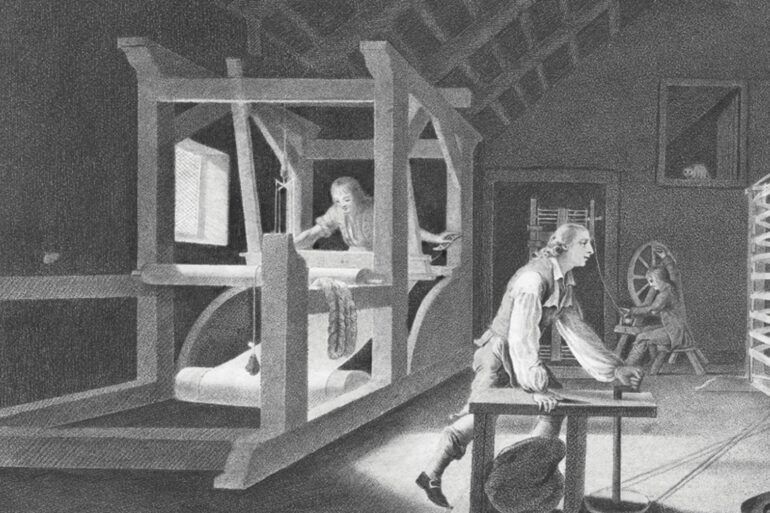Paisley’s Gaelic connections are far-reaching and have significantly shaped the town’s cultural heritage from poetry and song, to weaving and thread making, education, philanthropy and religious worship.
Our most iconic building – Paisley Abbey – has direct links to Gaeldom dating back to 1164 when Somerled MacGillebride, King of Argyll, was killed in battle in Renfrew.
Soon after, the Monastery of Renfrew was moved to a new site in Paisley, heavily funded – annually, a silver penny for each house in his lands which make smoke – by Somerled’s son Reginald, progenitor of Clan Donald and the Lord of the Isles. In return, he was declared a true brother of the Monastery and links between Paisley Abbey and the Lords of the Isles continued for 400 years until the Reformation.
The anniversary of the battle was commemorated in 2014 and included a performance by Renfrewshire Schools’ Ceilidh Band, led by Morag Currie. The group composed an original piece of music based on 12th century plainchant, rhythms and texts.
Textile production
In the late 18th century, textile production in Paisley had created a wealthy artisan weaving community, coinciding with The Highland Clearances and extreme poverty in Gaelic speaking areas. Highlanders were drawn to Paisley by well-paid work and a substantial Gaelic community was established in the town.
In 1794, a Gaelic chapel, seating 1,090, was opened and Gaelic Sunday schools were established. Poverty in the Highlands resulted in vast parishes and few ministries, to alleviate this, a Gaelic Missionary Society was established in Paisley in 1817.
Every year, up to six Gaelic Ministries, funded by Paisley, travelled the Highlands and Islands, preaching and distributing Gaelic bibles.
Iain Camshron, Bàrd Phàislig, was born on the Isle of Man in 1865 and moved to Ballachulish as the age of two before Paisley became his home as a young boy.
Camshron wrote a number of Gaelic songs including ‘Air Fail il o Iriag’, ‘Taobh Loch Eite’, ‘Gaol nan Cruinneag’ and ‘Gleann Bhaile Chaoil’ – the latter widely regarded as one of the most famous Ceilidh songs.
Harris Tweed can be said to have its origins in Paisley, stretching back to the 1840s when two islanders came south to be trained by local Paisley weavers – the cloth produced with the techniques they learned was of such quality their local landowner saw a chance to market it as a high-end product.
From there, Harris Tweed as we know it was born. To this day, a plaque dedicated to ‘the Paisley sisters’ sits on the site of their former cottage on the now-uninhabited island of Pabbay.
In the late 19th century, Paisley mills, owned by the Coats family, dominated world production of sewing thread. By 1900, several family members were millionaires and their philanthropy was far-reaching.
James Coats was the third generation of the family in the company and had a passion for establishing libraries in schools and remote rural communities. Between 1903 and 1912, he provided books for 4,000 libraries, mainly in the north and west of Scotland. He was particular about supplying Gaelic language books and, where not available, he had Gaelic translations published and printed by Alexander Gardener of Paisley.
Dòmhnall Ruadh Phàislig
One of Paisley’s most famous links to the Mòd comes from the Bàrd, Dòmhnall Ruadh Phàislig. Dòmhnall Ruadh was the Mòd Bàrd from 1938-39 and is recognised for his contribution to Gaelic poetry and song. His collected works were published as ‘Sporan Dhòmhnaill’, which contain a translation of Tam O’Shanter into Gaelic.
He was also the author of the famous song Òran na Cloiche – the story of the stealing of the Stone of Destiny. He is buried in Hawkhead Cemetery in Paisley, where a new gravestone was erected to commemorate him in 2001. His relatives still live in the town.
